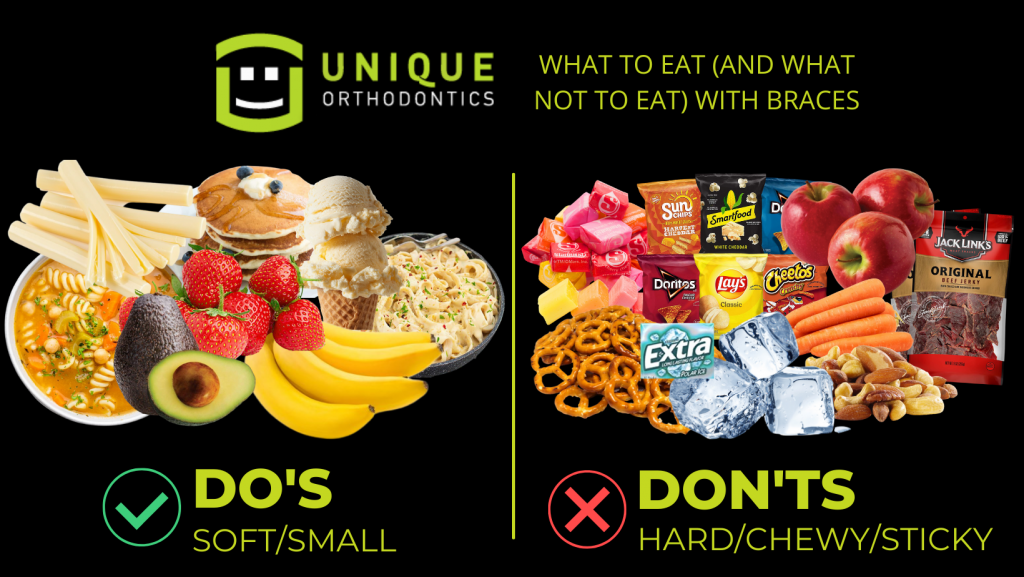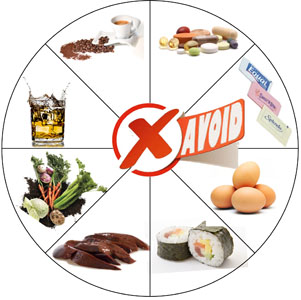
What foods can make arthritis worse These are the most frequently asked questions. Some are inflammatory while others aren't. But what does that mean for you, and how can you avoid it? It is important to understand what you are eating. A healthy diet is crucial to keeping inflammation down. Incorporating garlic into your diet can be especially beneficial. It is known for its anti-inflammatory properties, which can also help to reduce joint pain. People with arthritis will find Omega-3 fatty acid helpful as they can reduce inflammation and help them stay healthy.
Certain foods and beverages can help with arthritis. Antioxidant polyphenols have been shown in green tea, orange juice, as well as other beverages, to protect the body. Be mindful of your calories and portions. Water can help you stay hydrated, and it can also prevent the negative effects of processed foods. Some foods can actually make arthritis worse. So what can you avoid? These are some options. These ideas can make you feel happier.
Avoid sodas with sugar-sweetened syrups. These are inflammatory, which makes arthritis worse. Sugar intake should be limited. Studies have shown that sugar intake makes symptoms worse. Inflammation is often the reason for arthritis symptoms. These foods can make your arthritis worse. It is also a wise decision to avoid red meat which has high levels of sugar and fat.

Limit your intake of simple carbs. Simple sugars can increase your blood sugar and cause inflammation. It is important to eat plenty of vegetables, including tomatoes and eggplants, in order to maintain a healthy lifestyle. Beans and nuts are essential for anti-arthritis. You can also eat roasted vegetables. They may help reduce the chance of developing arthritis in your knees. Don't eat refined sugar. It's an inflammation toxin that can increase your likelihood of developing arthritis.
Refined grains increase blood glucose and are high-inflammatory. Refined grain also increases the production AGEs which can cause inflammation. They can also cause inflammation and pain. Avoid dairy products and wheat products. These foods can make your arthritis symptoms worse. These foods contain high levels of omega-6 fat acids which can be dangerous to your joints. Refined grains increase blood glucose and can cause arthritis.
Sugar and processed carbohydrates should be reduced if you suffer from RA. They can trigger inflammation and worsen symptoms of arthritis. While it is beneficial to eat more anti-inflammatory foods, there are exceptions. The majority of people consider milk and eggs healthy. They can have a positive impact on the body. Try eating a balanced diet with eggs and nuts if you have RA.
Numerous studies have shown that arthritis symptoms can be made worse by eating red meat. It can also cause inflammation in your joints. This can worsen the condition. Red meat is high in Advanced Glycation End Products, (AGEs). These molecules form when food is grilled, or left uncooked. AGEs cause inflammation and make the symptoms of arthritis worse. So, try to limit your intake of these foods.

Refined grains are a big no-no. They are delicious and can worsen symptoms of arthritis. Avoid processed foods, refined grains, and dairy. Whole grains are good sources of fibre and can lower C-reactive protein in your blood. They may reduce inflammation and pain associated with the condition. But the best way to get the most out of them is to cut them out altogether.
Certain foods are better and some are worse. While some of them have less saturated fat and are higher in fiber, they are still good options. Consuming more whole grains is the best choice. Whole grains are nutritious and have less trans fats that red meat. And if you do eat red meat, you'll be avoiding saturated fats and omega-6 fatty acids, which are both bad for the joints.
FAQ
What is the difference among a virus or a bacterium and what are their differences?
A virus, a microscopic organism, is incapable of reproducing outside its host cell. A bacterium is an organism that splits itself in two. Viruses are very small (about 20 nanometers) while bacteria are larger (up to 1 micron).
Viruses spread easily through contact with infected bodily tissues, such as saliva and urine, semen, vaginal secretions or pus. Bacteria is usually spread directly from surfaces or objects contaminated with bacteria.
Viruses may enter the body through cuts, scrapes. bites, or any other break in the skin. They can also penetrate the skin through the eyes, nose or mouth.
Bacteria can enter the body through wounds. They can also get into our bodies via food, water or soil.
Both viruses and bacteria can cause illness. But viruses can't multiply within their hosts. They only cause disease when they infect living tissue.
Bacteria may spread to other people and cause sickness. They can also invade other parts of your body. We need antibiotics to get rid of them.
Why is it important to live a healthy life?
Having a healthy lifestyle helps us live longer, happier lives. Good nutrition, exercise regularly, good sleep habits, stress management and healthy lifestyle can help you avoid heart disease and stroke.
A healthy lifestyle helps us cope better when we are faced with everyday stresses. A healthy lifestyle can also help you feel and look younger.
What should my weight be for my age and height? BMI calculator & chart
Calculating your body mass index (BMI), is the best method to calculate how much weight to lose. A healthy BMI range should be between 18.5 and 24,000. Aim to lose 10 pounds per month if your goal is to lose weight. Enter your height and weight to calculate your BMI.
This BMI chart can help you find out if or not you are obese.
What should you eat?
Consume lots of fruits, vegetables. They contain vitamins and minerals which help keep your immune system strong. Fruits and veggies are also high in fiber, which makes them filling and helps with digestion. At least five servings of fruits and vegetables should be consumed each day.
Water is essential for your body. Water flushes toxins out of the body and helps to feel full between meals. Drink about eight glasses each day.
Eat whole grains instead of refined ones. Whole grains contain all of their nutrients, including B vitamins and iron. Refined grain has lost some of its nutrition.
Sugary drinks are best avoided. Sugary drinks have empty calories and are a major contributor to obesity. Instead, choose water, milk, and unsweetened tea.
Avoid fast food. Fast food is low in nutritional value. It may taste great but it won't give you the energy you need to function properly. Avoid soups, sandwiches and other unhealthy options.
Limit your alcohol consumption. You can reduce your intake of alcohol by limiting the amount of empty calories. Limit the number of alcoholic beverages you consume per week to no more that two.
Red meats should be avoided. Red meats can be high in cholesterol and saturated fat. You should choose lean cuts like beef, pork lamb, chicken and fish instead.
What can you do to boost your immune system?
The human body is composed of trillions if not billions of cells. Each cell works together to create organs and tissues that fulfill specific functions. When one cell dies, another cell replaces it. Chemical signals, called hormones, allow cells to communicate with each other. Hormones regulate every bodily process, from growth and development to metabolism as well as immunity.
Hormones, chemicals that are secreted throughout the body by glands, are chemicals. They travel through the blood stream and act like messengers to control how our bodies function. Some hormones are made internally, while others are created outside the body.
The release of hormones from a hormone producing gland into the bloodstream is the beginning of hormone production. Once hormones are released, they move through the body to reach their target organ. In some cases, hormones remain active only for a short period of time. Others hormones are more active and have a longer life expectancy. They can still influence the body's functions long after they are eliminated from the bloodstream.
Some hormones are made in large quantities. Others are only produced in very small quantities.
Certain hormones can only be produced at specific times in life. For example, estrogen can be produced during puberty or pregnancy. Estrogen helps women develop breasts, maintain bone density, and prevent osteoporosis. Estrogen promotes hair growth, and skin stays soft and smooth.
How do I count calories?
You might be asking "What is the best diet?" or "is counting calories necessary?" Well, the answer depends on several factors including your current health status, your personal goals, your preferences, and your overall lifestyle.
The Best Diet - Which One Is Right To You?
My current health, my personal goals and lifestyle will determine the best diet for me. There are many diets available, some good and others not so good. Some work well for certain people while others don't. So what should I do? How can I make the right choice?
These are the questions that this article attempts to answer. It starts with a brief introduction of the different types of diets available today. Then we will discuss the pros & cons of each kind of diet. Finally, we'll discuss which one is best.
Let's look at some of the main types of diets to get started.
Diet Types
There are three main types: low-fat, high-protein, or ketogenic. Let's talk about them briefly.
Low Fat Diets
A low fat diet is a diet that restricts the amount of fats consumed. This is done through reducing the intake of saturated fats (butter, cream cheese, etc.) It is possible to replace these saturated fats with unsaturated ones (olive oil or avocados). If you want to lose weight fast and easily, then a low fat diet is often recommended. This type of diet can lead to constipation and heartburn as well as indigestion. In addition, it may lead to vitamin deficiencies if a person doesn't get enough vitamins from their food.
High Protein Diets
High protein diets discourage carbohydrates and encourage the use of proteins. These diets typically have more protein than other diets. These diets are meant to increase muscle mass, and burn more calories. They may not be able to provide sufficient nutrition for people who need it. They can also be very restrictive so they may not be suitable for everyone.
Ketogenic Diets
Ketogenic diets also go by the name keto diets. They are high in fat, moderately high in protein and low in carbohydrates. They are typically used by athletes and bodybuilders because they allow them to train harder and longer without getting tired. But, they require strict adherence to avoid negative side effects like nausea, headaches, and fatigue.
Statistics
- WHO recommends consuming less than 5% of total energy intake for additional health benefits. (who.int)
- The Dietary Guidelines for Americans recommend keeping added sugar intake below 10% of your daily calorie intake, while the World Health Organization recommends slashing added sugars to 5% or less of your daily calories for optimal health (59Trusted (healthline.com)
- According to the Physical Activity Guidelines for Americans, we should strive for at least 150 minutes of moderate intensity activity each week (54Trusted Source Smoking, harmful use of drugs, and alcohol abuse can all seriously negatively affect your health. (healthline.com)
- In both adults and children, the intake of free sugars should be reduced to less than 10% of total energy intake. (who.int)
External Links
How To
What does the word "vitamin" mean?
Vitamins are organic compounds naturally found in food. Vitamins help us absorb nutrients from foods we eat. Vitamins cannot be made by the body; they must be taken from food.
There are two types if vitamins: water soluble, and fat soluble. Water-soluble vitamins dissolve quickly in water. Vitamin C,B1(thiamine), B2 (2riboflavin), and B3 (3niacin), as well as vitamin C,B1, B2 (riboflavin), and B3 (niacin), vitamin B6 (pyridoxine), vitamin folic acid (biotin), pantothenic, and choline are examples. Fat-soluble vitamins are stored in the liver, fatty tissue and kidneys. These include vitamin D, E and K, as well as beta carotene.
Vitamins are classified according to their biological activity. There are eight major types of vitamins:
-
A - Essential for healthy growth and health maintenance.
-
C – essential for proper nerve function.
-
D – Essential for healthy teeth, bones and joints
-
E is needed for good reproduction and vision.
-
K - required for healthy muscles and nerves.
-
P - Essential for strong bones and teeth.
-
Q - aids digestion and absorption of iron.
-
R - Red blood cells are made from red blood cells.
The recommended daily allowance (RDA) of vitamins varies depending on age, gender, and physical condition. The U.S. Food and Drug Administration sets RDA values.
For adults over 19 years, the RDA is 400 mg per day for vitamin A. Pregnant women require 600 micrograms daily to support fetal development. Children ages 1-8 require 900 micrograms per day. Infants under one year of age require 700 micrograms per day, but this amount decreases to 500 micrograms per day between 9 months and 12 months of age.
Children aged 1-18 years need 800 micrograms daily, while children overweight require 1000 micrograms per days. Children who are severely obese or underweight will need 1200 micrograms each day.
Children aged 4-8 years old who have been diagnosed as having anemia require 2200 micrograms of vitamin C per day.
2000 micrograms is the minimum daily intake for adults over 50 years old to maintain good health. Women who are pregnant or breastfeeding need 3000 micrograms per day due to increased nutrient requirements.
Adults over 70 need 1500 micrograms daily, as they lose 10% of their muscle every ten years.
Women who are pregnant, nursing or breastfeeding need more than the RDA. Pregnant mothers need 4000 micrograms per daily during pregnancy and 2500 after giving birth. Breastfeeding mothers need 5000 micrograms per day when breast milk is being produced.